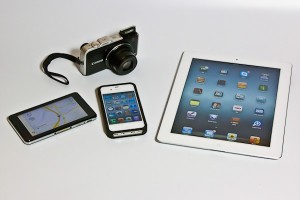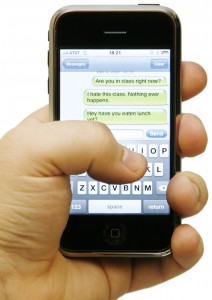 Looking at past trends in an evolving industry can be a poor predictor of future trends—whether you’re talking about the stock market or the PR field.
Looking at past trends in an evolving industry can be a poor predictor of future trends—whether you’re talking about the stock market or the PR field.
Witness Facebook (a 9-year-old), Twitter (a 7-year-old), Instagram and Tout (both 2 year olds). These are among only a few of the game changers that disrupted the publishing industry. Each is a relative toddler by traditional business standards, and not that many years before their existence I don’t recall anyone predicting them. But their global impact on the human condition is already established.
The trend impacting the PR industry, therefore, is not which new social tool will take off, but that game changers are now the norm. Expect and anticipate them.
Here are four things (among many) I see near through long term impacting PR.
The Story Stays
We like a good yarn. Stories have been told throughout human history and they’re not going away anytime soon. So while the delivery method may continue to break speed records in the unprecedented data age we’re now in, if there isn’t a compelling story to whatever the communication is, it won’t leave the station.
In creating your communications, think about your story. How compelling is it or could it be, and why should others care? And if you don’t have one, then either create one or rethink your communication strategy for most effective resource use.
Multimedia Explosion

We are a sensorial species, and with the written word there’s a terrible lack of engagement of the senses. True, imagination can help make up for that. However, the way I imagine Utopia and you do can be very different, meaning there’s a significant control loss of the intended message. But what if I could not only tell you a story, but also engage you in it by your five senses? Instant communication around the planet is now possible with video covering sight and sound that will only increase. But I think it’s only a matter of time before technology allows for an online cook ‘book’ to not only convey with what and how something’s made, but also how it should look, feel and even smell and taste.
Additive Manufacturing

…aka 3-D Printing will change everything, and this means for PR too. I think 3-D printing is trul yRoddenberry’s Star Trek replicator come to life like the cell phone, and why I see it profoundly impacting PR is that currently the world’s societies are built largely around traditionally manufactured goods and related services – shoes manufactured in China are consumed in the USA; medical implants created in New York are used in Canada; an airplane is created and assembled from many different places; etc. Things today are still made for us and we don’t make things for ourselves. PR supports all of this ‘traditional’ world commerce that in the next decade will dramatically change with the advent of 3-D printing for the masses. Like intangibles such as information value decreasing with increased accessibility, so will the value of physical goods change. As it does, PR will change as well, becoming less about conveying a compelling call to action to buy consumer products, say, and more about strategically helping communicate things like B2B opportunities, services expertise, key events, experience opportunities, and political and societal agendas.
Local & Smaller
It’s well established doctrine for good communication to know thy audience, and reach them where they are. With billions of us now having our heads buried in our smartphones more than we’d like to admit, guess where audiences are? Sure, we’re still driving down the freeway ready to notice a billboard, pouring over that quaint thing called a newspaper at Starbucks occasionally, and watching commercials whip by as we watch our favorite DVR’d show. But increasingly we’re more interested in our immediate environs – our local neighborhood – than otherwise. So as opposed to a broad shotgun approach, PR will increasingly need a precise rifle approach tailored to local geography and interests. And in doing so rely less on large real estate like a full magazine, in-depth television reporting or a regional newspaper spread, but instead plan for consumption to be increasingly on a screen just four or five inches wide—that if it’s showing a picture of a rose, soon enough will probably smell just as sweet.





 Grant Wright
Grant Wright





 Corie Fiebiger
Corie Fiebiger
 Shae Geary
Shae Geary Roman Lukjanenko
Roman Lukjanenko Phelan Riessen
Phelan Riessen Katrina Early
Katrina Early Hamish Marshall
Hamish Marshall